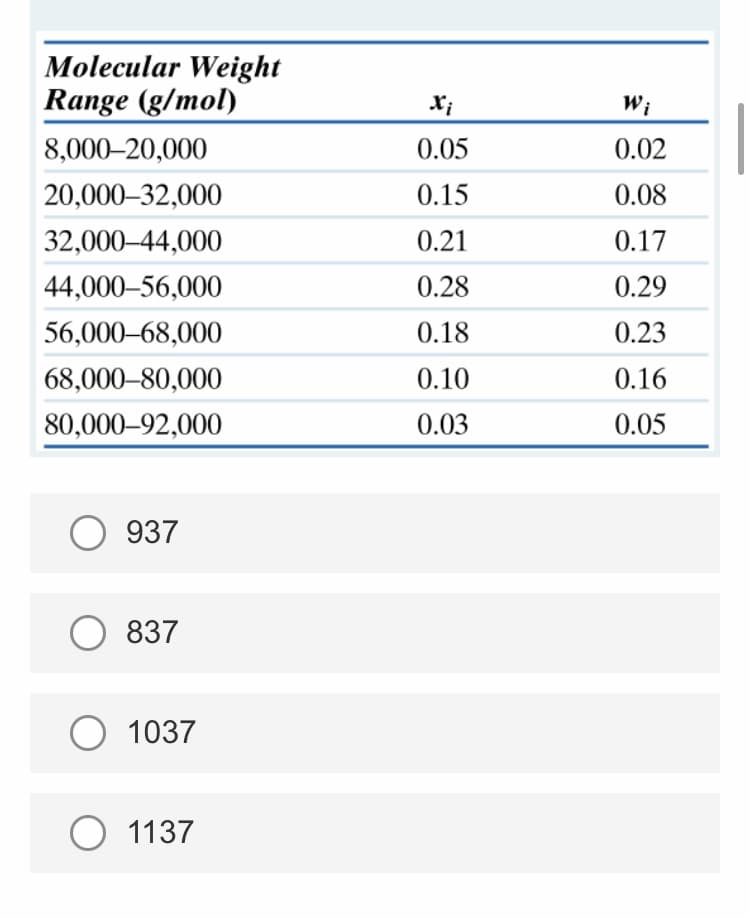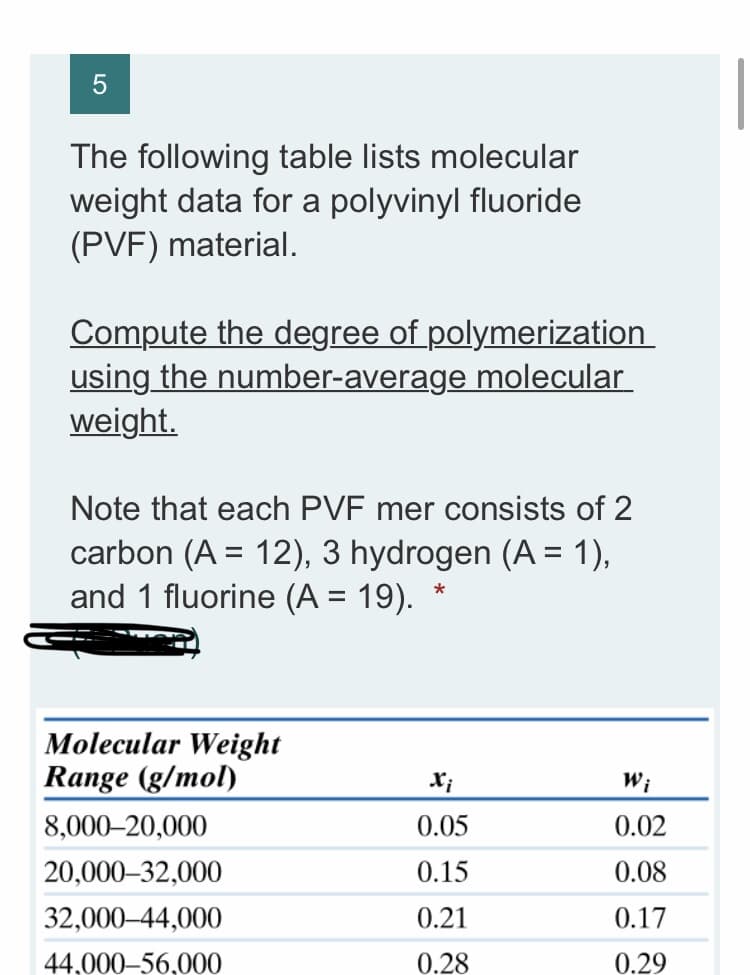The following table lists molecular weight data for a polyvinyl fluoride (PVF) material. Compute the degree of polymerization using the number-average molecular weight. Note that each PVF mer consists of 2 carbon (A = 12), 3 hydrogen (A = 1), and 1 fluorine (A = 19).
The following table lists molecular weight data for a polyvinyl fluoride (PVF) material. Compute the degree of polymerization using the number-average molecular weight. Note that each PVF mer consists of 2 carbon (A = 12), 3 hydrogen (A = 1), and 1 fluorine (A = 19).
Principles of Instrumental Analysis
7th Edition
ISBN:9781305577213
Author:Douglas A. Skoog, F. James Holler, Stanley R. Crouch
Publisher:Douglas A. Skoog, F. James Holler, Stanley R. Crouch
Chapter7: Components Of Optical Instruments
Section: Chapter Questions
Problem 7.14QAP
Related questions
Question
5

Transcribed Image Text:Molecular Weight
Range (g/mol)
X;
W;
8,000–20,000
0.05
0.02
20,000–32,000
0.15
0.08
32,000-44,000
0.21
0.17
44,000-56,000
0.28
0.29
56,000–68,000
0.18
0.23
68,000–80,000
0.10
0.16
80,000–92,000
0.03
0.05
937
О 837
O 1037
О 1137

Transcribed Image Text:The following table lists molecular
weight data for a polyvinyl fluoride
(PVF) material.
Compute the degree of polymerization
using the number-average molecular
weight.
Note that each PVF mer consists of 2
carbon (A = 12), 3 hydrogen (A = 1),
and 1 fluorine (A = 19).
%3D
Molecular Weight
Range (g/mol)
W;
8,000–20,000
0.05
0.02
20,000–32,000
0.15
0.08
32,000-44,000
0.21
0.17
44.000–56.000
0.28
0.29
Expert Solution
This question has been solved!
Explore an expertly crafted, step-by-step solution for a thorough understanding of key concepts.
This is a popular solution!
Trending now
This is a popular solution!
Step by step
Solved in 6 steps with 5 images

Knowledge Booster
Learn more about
Need a deep-dive on the concept behind this application? Look no further. Learn more about this topic, chemistry and related others by exploring similar questions and additional content below.Recommended textbooks for you

Principles of Instrumental Analysis
Chemistry
ISBN:
9781305577213
Author:
Douglas A. Skoog, F. James Holler, Stanley R. Crouch
Publisher:
Cengage Learning


Principles of Instrumental Analysis
Chemistry
ISBN:
9781305577213
Author:
Douglas A. Skoog, F. James Holler, Stanley R. Crouch
Publisher:
Cengage Learning
